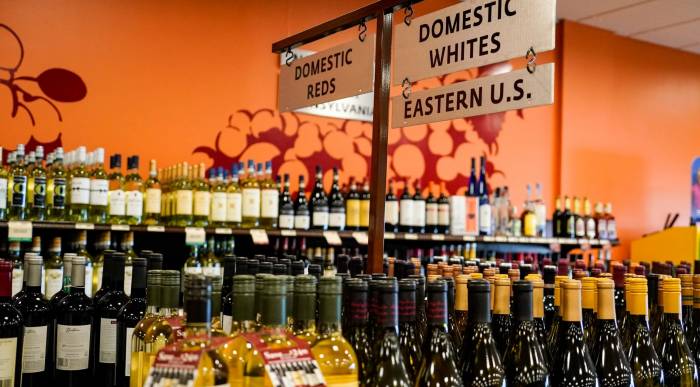US wine and spirits market sees sharp declines in sales and volume in early 2025
Premium brands show resilience but overall industry faces pressure from shifting consumer habits and economic uncertainty
2025-05-06

The US wine and spirits market faced a challenging start to 2025, with new data from SipSource showing significant declines in both volume and revenue during the first quarter. According to the report, spirits volumes fell by 6.3% in Q1, while revenue dropped by 5.1%. Over the past 12 months, the rolling average for spirits volume is now down 3.8%, with revenue close behind at a 3.9% decrease.
Wine experienced even steeper declines. Volumes dropped by 9.9% in the first quarter, and revenue fell by 10.5%. The data indicates that while premium wines priced above $50 are seeing some growth in volume, overall revenue remains weak as distributors and retailers continue to work through existing inventory. Lower-priced table wines, which had shown signs of recovery in previous quarters, have also seen their positive trends reverse.
This shift marks a notable change in consumer behavior. In recent years, the wine sector had benefited from premiumization, where revenue growth outpaced volume as consumers traded up to higher-priced bottles. The latest figures show this trend reversing, with volume now declining faster than revenue. Analysts say this reversal could signal a longer-term change in how Americans buy wine.
For spirits, the pattern is different. Revenue is beginning to recover more quickly than volume, suggesting that consumers may be opting for higher-priced spirits or premium brands even as they buy less overall. Projections from SipSource indicate that core spirits volumes will end the second quarter at around -3.83% on a rolling 12-month basis, hinting at some stabilization despite ongoing declines.
Major industry players are feeling the impact of these market shifts. LVMH reported that its Moët Hennessy division saw organic sales fall by 9% in the first quarter of 2025, making it the weakest performing segment within the luxury conglomerate. Across all divisions, LVMH’s organic sales were down 3%. Alexandre Arnault, who became deputy CEO of Moët Hennessy earlier this year, addressed staff about the unusual scope of the downturn. He noted that typically when one part of LVMH’s business struggles, another compensates with stronger performance, but this year has proven different.
The causes behind these declines are varied. Economic uncertainty and inflation have led many consumers to cut back on discretionary spending, including alcohol purchases. Shifting preferences among younger drinkers and increased competition from non-alcoholic beverages are also contributing factors.
Industry analysts will be watching closely in the coming months to see if these negative trends continue or if stabilization takes hold as predicted for core spirits categories. For now, both wine and spirits producers face a tough environment as they adapt to changing consumer habits and broader economic pressures across the United States.
Founded in 2007, Vinetur® is a registered trademark of VGSC S.L. with a long history in the wine industry.
VGSC, S.L. with VAT number B70255591 is a spanish company legally registered in the Commercial Register of the city of Santiago de Compostela, with registration number: Bulletin 181, Reference 356049 in Volume 13, Page 107, Section 6, Sheet 45028, Entry 2.
Email: [email protected]
Headquarters and offices located in Vilagarcia de Arousa, Spain.